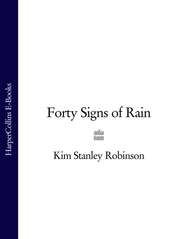По всем вопросам обращайтесь на: info@litportal.ru
(©) 2003-2024.
✖
Green Mars
Автор
Год написания книги
2018
Настройки чтения
Размер шрифта
Высота строк
Поля
So it was important to find a smaller group at Biotique, and Sax set about doing so. It certainly made sense to concentrate at first on his lab. He had joined them as a biophysicist, which was risky, but put him where he wanted to be in the company; and he hoped he could hold his own there. If not, then he could claim to have come to biophysics from physics, which was true. His boss was a Japanese woman named Claire, middle-aged in appearance, a very congenial woman who was good at running their lab. She had greeted him on his arrival, and put him to work with the team designing second and third generation plants for the glaciated regions of the northern hemisphere. These newly hydrated environments represented tremendous new possibilities for botanical design, as the designers no longer had to base all species entirely on xerophytes. Sax had seen this coming from the very first moment he had spotted the flood roaring down Ius Chasma into Melas, in 2061. And now forty years later he could actually do something about it.
So he very happily joined in the work. First he had to bring himself up to date on what had already been put out there in the glacial regions. He read voraciously in his usual manner, and viewed videotapes, and learned that with the atmosphere still so thin and cold, all the new ice released on the surface was subliming until its exposed surfaces were fretted to a minute lacework. This meant there were billions of pockets large and small for life to grow in, directly on the ice; and so one of the first forms to have been widely distributed were varieties of snow and ice algae. These algae had been augmented with phreatophytic traits, because even when the ice started pure it became salt-encrusted by way of the ubiquitous windblown fines. The genetically-engineered salt-tolerant algae had done very well, growing in the pitted surfaces of the glaciers, and sometimes right into the ice. And because they were darker than the ice, pink or red or black or green, the ice under them had a tendency to melt, especially during summer days, when temperatures were well above freezing. So small diurnal streams had begun to run off the glaciers, and along their edges. These wet morainelike regions were similar to some Terran polar and mountain environments. Bacteria and larger plants from these Terran environments, genetically altered to help them survive the pervasive saltiness, had first been seeded by teams from Biotique several M-years before, and for the most part these plants were prospering like the algae had.
Вы ознакомились с фрагментом книги.
Приобретайте полный текст книги у нашего партнера:
Приобретайте полный текст книги у нашего партнера:











